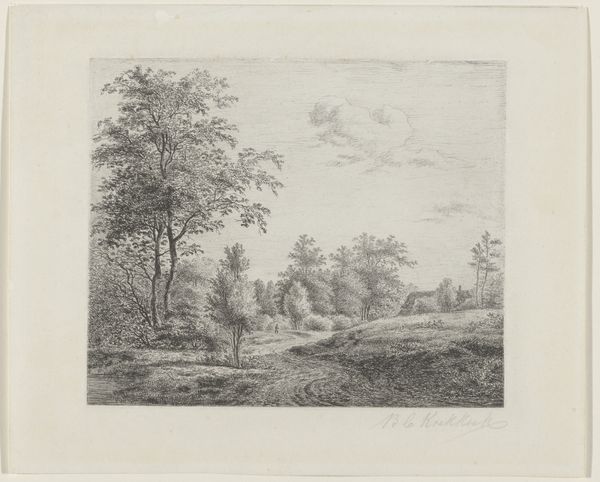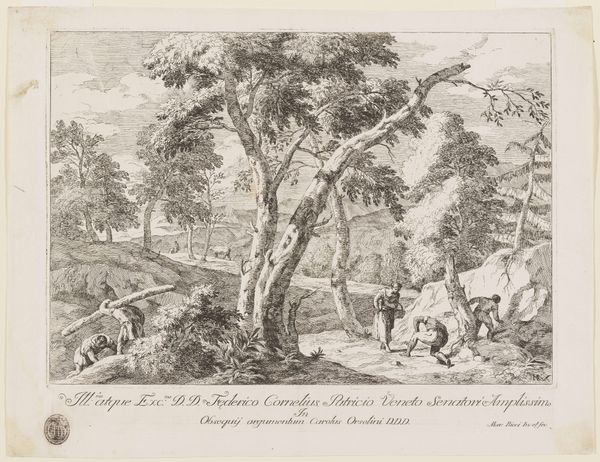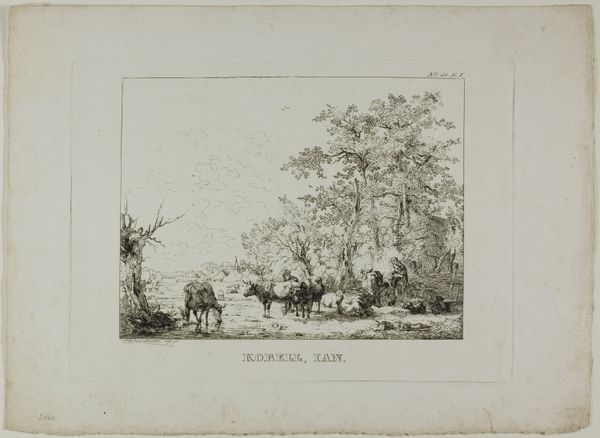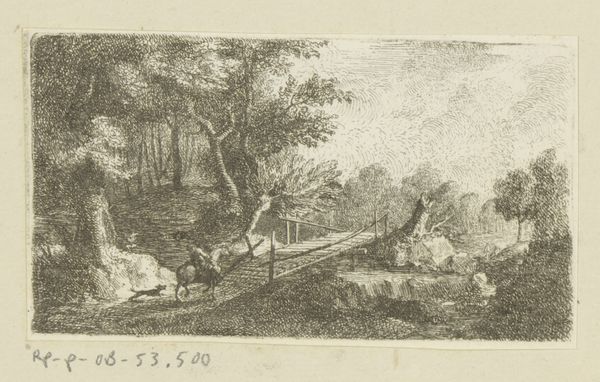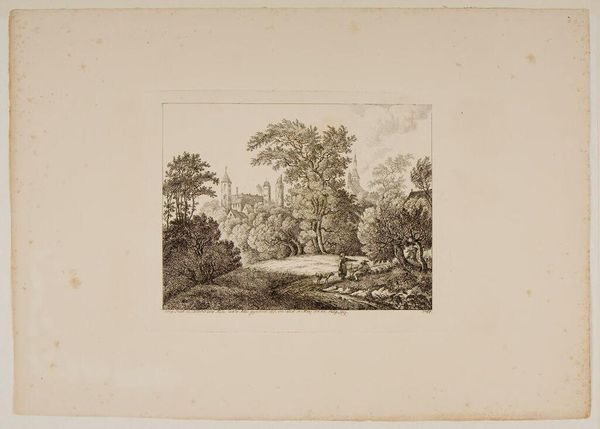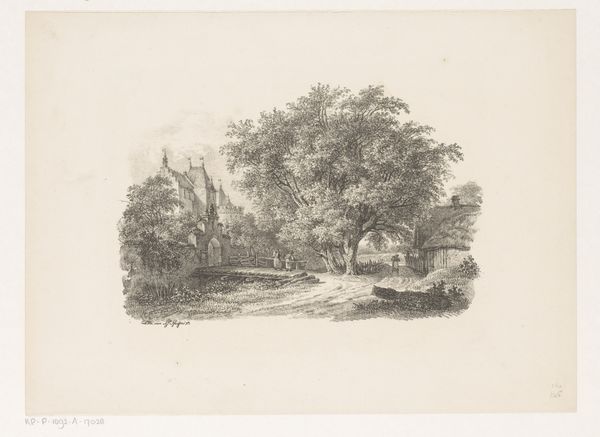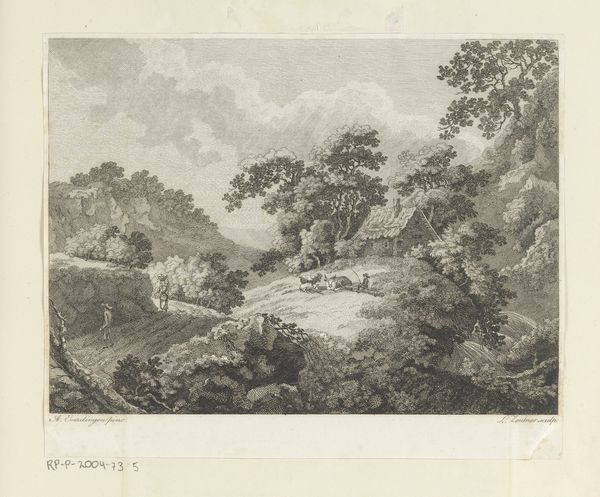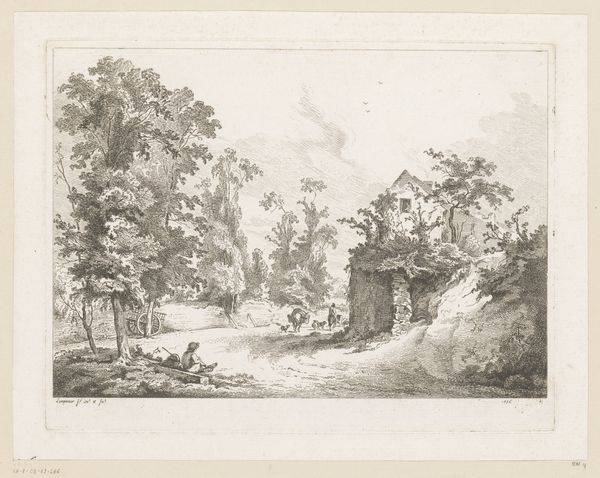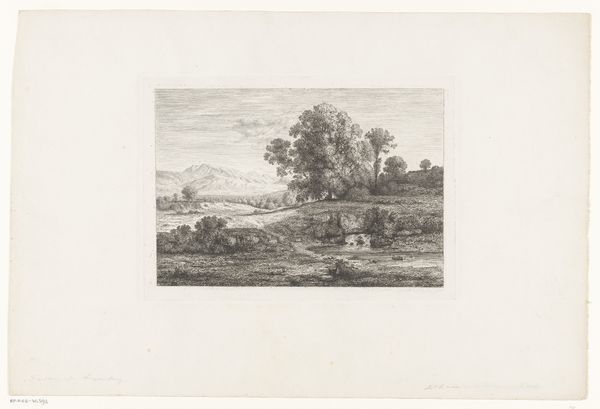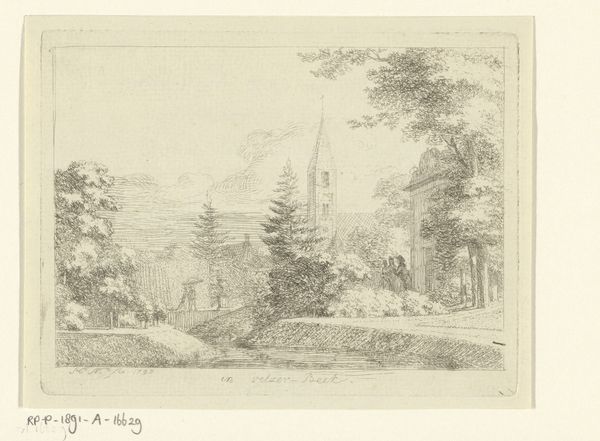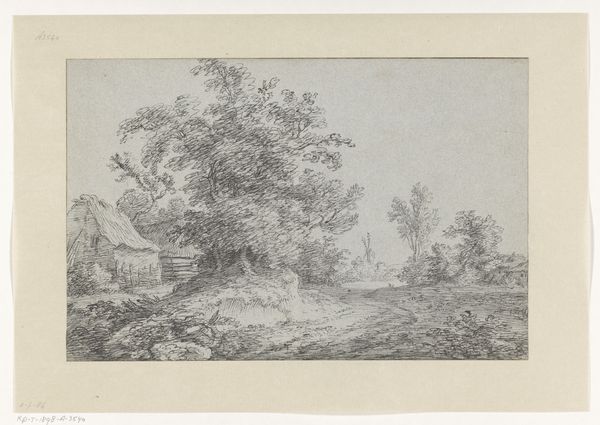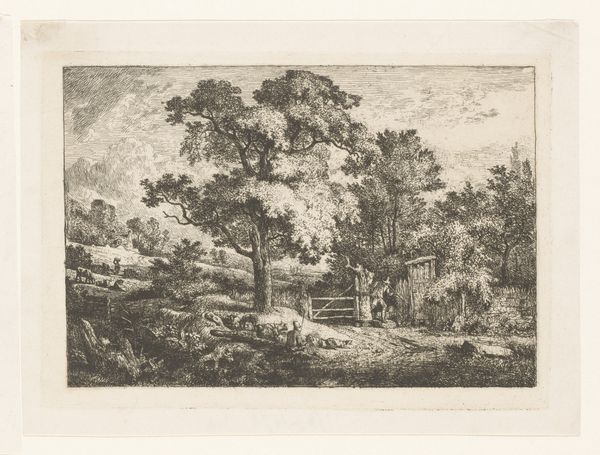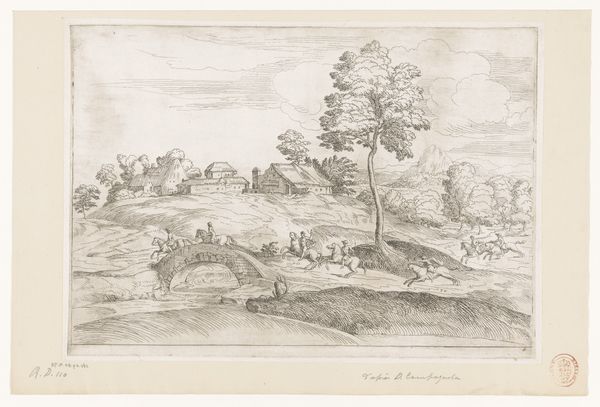
drawing, print, etching
#
drawing
#
baroque
# print
#
etching
#
old engraving style
#
landscape
Dimensions: height 116 mm, width 178 mm
Copyright: Rijks Museum: Open Domain
Curator: Here we have "Landscape with a Pumping Station among Trees," an etching attributed to Christian Ludwig von Hagedorn, dating somewhere between 1722 and 1780. Editor: It's remarkably detailed for an etching. There’s an almost unsettling busyness to it. The density of marks makes me think about the labor involved in producing such an image, all that work translating nature into such minute detail. Curator: Absolutely. What's interesting here is the blend of natural and artificial elements, so typical of baroque sensibilities. The pumping station itself represents a human attempt to control and manipulate the landscape. How does that industrial intrusion affect your perception? Editor: It adds an element of…purpose, doesn’t it? This isn’t just some romantic idyll; it's a scene of production. These types of constructions required an extraction of work. The scale also jumps out at me. This wouldn't be possible without exploitation of work to provide the financial output for constructions like this. How did images of this infrastructure become public, though? Curator: This print, like many others, likely circulated amongst collectors and art enthusiasts. It serves as a historical record, revealing contemporary approaches to land management. Remember, the period saw significant reclamation and drainage efforts. Editor: So, these images weren't simply about aesthetics; they played a role in shaping public perception, normalizing or even celebrating technological progress. Did they reflect any social or political leanings? Curator: I suspect prints like these would reinforce the prevailing ideas about the role of humans dominating nature. These types of landscaping also reflect political leanings in shaping trade routes and agricultural distribution within urban areas. Editor: It's interesting how an apparently simple landscape print opens up such wider conversations about the nature-culture divide, labor, and the political landscape. Curator: Precisely. The etching becomes a lens to view a society negotiating its relationship with the environment and power structures. Thank you for the discussion. Editor: Thank you for letting me see a print of our history today in front of my eyes!
Comments
No comments
Be the first to comment and join the conversation on the ultimate creative platform.
